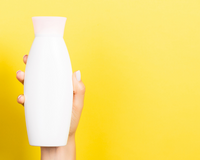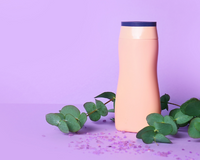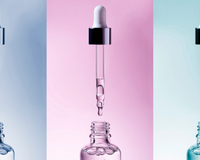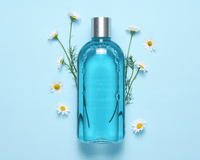The majority of black baby hair care products, coarse, curly or wavy hair that requires extra attention. The hair is dry and prone to breaking due to its texture and curl pattern, so treat it tenderly!
To eliminate excess oil, many Asians and Caucasians wash their hair as often as once a day. African Americans, on the other hand, do not generate as much oil. Overwashing can remove the scalp's natural oils, leaving hair dry, brittle, and frizzy. Instead, use a gentle baby shampoo once a week to wash your kid's hair. Because biracial newborns' hair is generally less curled and produces more oil, you can wash their hair twice a week if necessary.
Black Baby Hair Care Products
Because African-American hair is kinky, it tangles readily. To avoid damage, carefully comb away the knots. Some pointers:
- Use a soft-bristle brush or a wide-tooth comb.
- When your hair is dry, never try to comb it out.
- Detangle the hair with a little bit of oil or cream moisturizer.
Moisturize your hair at least once a week to maintain it smooth and manageable. You may need to experiment with several products to find the ideal regimen for your baby's hair type and structure. Here are a few possibilities:
- At natural food stores, look for products like jojoba oil, emu oil, avocado oil, virgin coconut oil, or almond oil.
- Mix a light oil (sweet almond oil or light virgin olive oil) with natural substances to make your own moisturizer (rosemary or lavender).
- Using your fingertips, gently brush a little quantity of the moisturizer into your hair and onto your scalp.
- Some components, like essential oils, may be sensitive or allergic to your infant, so keep an eye out for unexpected reactions or breakouts. Mineral oil and petroleum jelly tend to block pores, so stay away from them.
Black Baby Hair Care Products Prevent Dandruff
It's probably cradle cap (also known as seborrheic dermatitis) or eczema (also called atopic dermatitis). In African American newborns, both of these disorders are frequent.
The cradle cap appears as crusty, whitish, or yellowish spots on the scalp in the first few months of infancy. It isn't beautiful, but it isn't harmful. The cradle cap usually goes away on its own after a few months, but if it persists, try washing more frequently and gently brushing or massaging your baby's scalp with a soft brush or a terry cloth towel. Apply a little amount of coconut or olive oil to difficult instances and let for 20 to 30 minutes before gently brushing away the scales with a soft bristle brush before shampooing.
Scratching, combing, or forcefully brushing the scalp to remove flakes might irritate the scalp even more. Talk to your baby's doctor if the cradle cap doesn't improve or spreads to other locations. He or she may suggest a medicated shampoo.
What Is Cradle Cap and How Does It Affect You?
Eczema causes a rash on the scalp that is red, dry, and irritating. Eczema affects a baby's skin, making it highly sensitive. According to most research, the proclivity for eczema is hereditary.
Eczema usually appears in newborns between the ages of two and six months. It may be highly irritating and cause hair dryness and breakage in severe situations.
Use gentle, fragrance-free soaps and shampoos, such as those designed for sensitive skin, if your child has eczema. Apply a natural oil, such as jojoba or coconut, or an emollient lotion, such as shea butter, to cure the problem. If your baby's eczema worsens or spreads, a medicated shampoo and a cortisone cream or analgesic lotion may be recommended by his or her doctor.
Hair Care For Black Babies Styling The Babies' Hair Is Made Easier
The hair follicles develop stronger when a newborn's hair is left loose and natural. Depending on the length of your baby girl's hair, you may experiment with different styles including ponytails, plaits, and braids as she grows older. Start by detangling the ends using a wide-tooth comb or a soft bristle brush to avoid damage. Then comb or brush your hair from the roots to the ends.
Tie off the piece of hair you're not working on after parting it so you can focus on one region at a time. If required, detangle the hair with a little bit of oil or cream moisturizer. Smooth bands of covered elastic bands should be used to style your baby's hair in braids or ponytails. Rubber bands generate excessive friction in the hair, resulting in breaking.
Hairstyles that strain the hair excessively tightly should be avoided. Traction alopecia is a disorder that causes hair to fall out as a result of pulling on it. If the tugging continues for an extended period of time, it can cause scalp injury and possibly irreversible hair loss. When your baby's hair starts to fall out and tiny lumps appear around her hairline or elsewhere on her head, you'll know she's developing traction alopecia. The problem is generally reversed with a change in hairdo, and the hair grows back. (Alopecia areata, an autoimmune condition that causes hair loss in patches, is not to be confused with traction alopecia.) It appears to be a hereditary condition that has nothing to do with hair pulling.
Black Baby Hair Care Products For Curl Definition
Learning to define your child's natural curls at an early age will make styling their hair much easier as they get older. It's crucial to choose mild products that don't need them to apply harsh gels on their curls. Curl keepers can help you achieve defined, frizz-free curls.
This silicone-free styler helps you to define your baby's curls while sliding easily through their hair. This no-build-up styler also allows you to freshen your baby's hair with a little water rather than using extra products.
Babies go through a phase where they shed a lot of hair. It's critical to ensure your baby's healthy hair growth, and using the right items may occasionally assist stimulate their follicles and speed up the process. The brown butter is a wonderful blend of butter and oils that will help to stimulate your baby's scalp.









